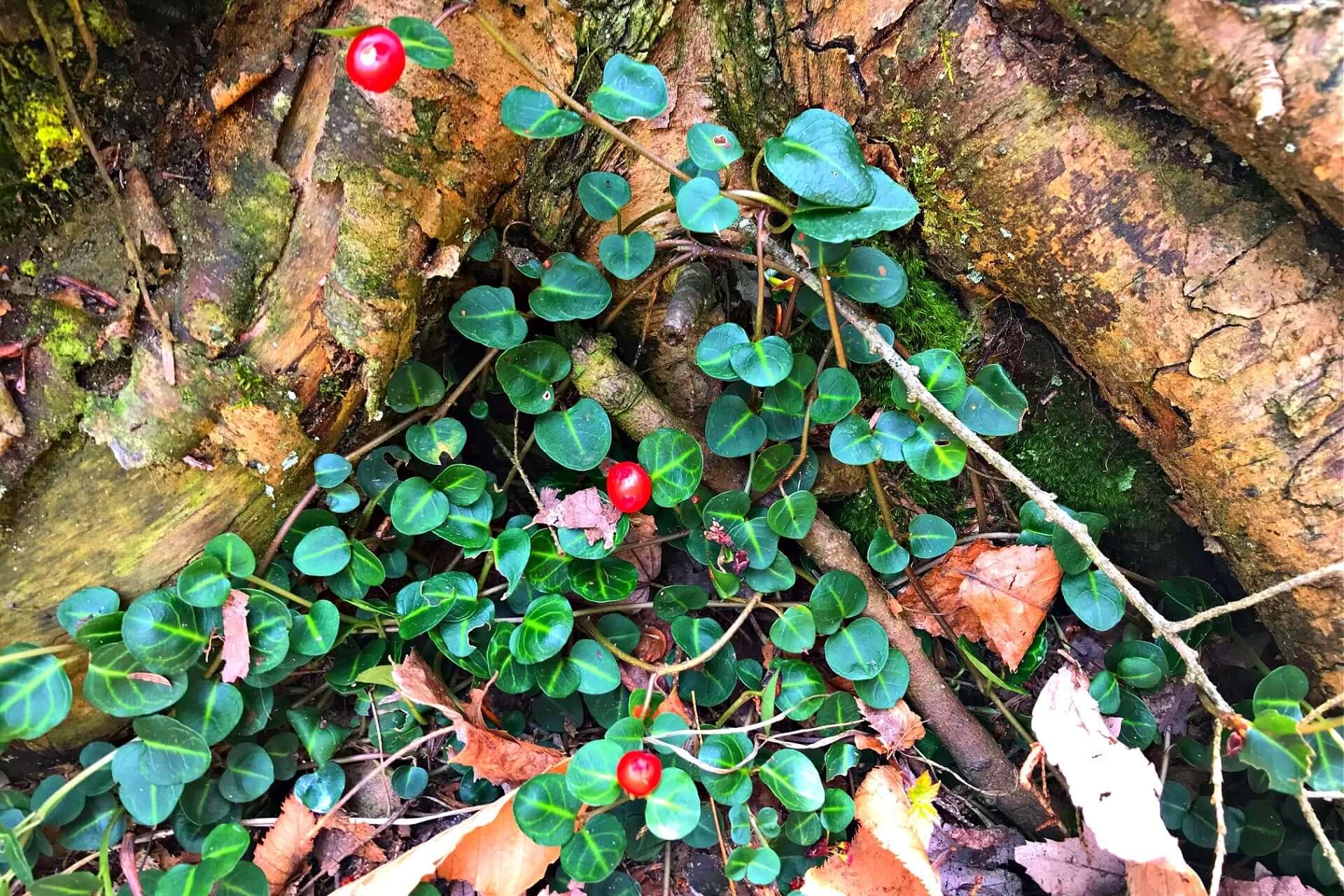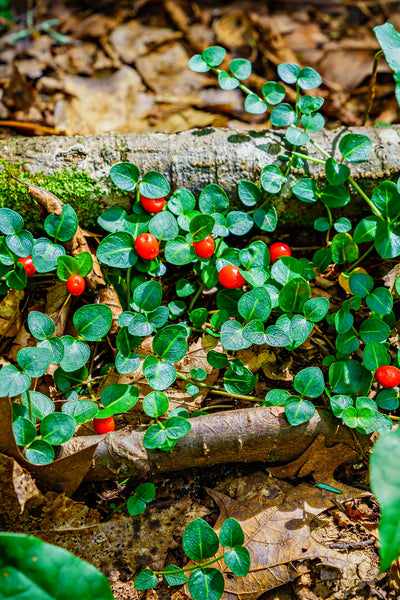Partridge berry (Mitchella repens) is a charming groundcover plant native to North America, known for its low-growing nature, glossy green leaves, and small red berries. This perennial plant thrives in woodland settings and shady garden spots, making it an ideal choice for those looking to add a natural touch to their landscapes. The beauty of the partridge berry lies in its simplicity. It provides year-round interest, offering delicate white flowers in spring and summer and transitioning into striking red berries that persist into winter. This evergreen, trailing plant is not only visually appealing but also serves a variety of ecological and practical functions in the garden.
What is partridge berry good for?
Partridge berry is excellent for ground cover in shady areas where other plants may struggle to thrive. Its power to grow a mat of foliage makes it highly effective at preventing soil erosion, especially on slopes or uneven terrain. This characteristic makes it valuable for gardeners looking to maintain the integrity of their soil without relying on traditional turf grass or more aggressive plants. The plant's spreading habit creates a lush carpet, giving gardens a more natural woodland feel.
In addition to its ornamental appeal, partridge berry plays an essential role in local ecosystems. Though not widely consumed by humans, red berries are food for birds and small mammals. This aspect of the plant helps create a wildlife-friendly garden, drawing in various species that benefit from the plant's berries and cover. Moreover, partridge berry attracts beneficial insects like bees, mainly when it is in bloom during the warmer months. These pollinators contribute to the plant's reproduction and support the overall health of the garden environment.
Does partridge berry grow fast?
Partridge berry is not known for rapid growth. It establishes itself slowly, forming a thick mat of leaves over time rather than quickly taking over an area. This slower growth rate benefits gardeners who want a plant that will stay manageable without the risk of it overrunning other species. The plant's moderate pace allows it to integrate well with other shade-loving perennials, ferns, and woodland species, creating a balanced and harmonious planting scheme.
While it doesn't grow fast, partridge berry has deficient maintenance once established. It requires little care beyond occasional watering, particularly during dry spells, and benefits from well-drained, humus-rich soil. Because it thrives in the dappled light of woodland settings, it's ideally suited for areas under tree canopies or in shaded garden corners. Its tolerance for dry and moist soil conditions makes it adaptable, though consistent moisture will help it establish more quickly.
Are lingonberries and partridge berries the same thing?
Despite their visual similarities and the common confusion, lingonberries and partridge berries are not the same plant. Lingonberries (Vaccinium vitis-idea) belong to the heath family and are more commonly found in northern climates, especially in Europe and North America. They produce small, tart red berries widely used in culinary applications such as jams and sauces. In contrast, partridge berries belong to the Rubiaceae family and are native to Eastern North America. Humans less commonly consume the berries of partridge berry due to their mildly bland flavor, though they are a food for wildlife.

While both plants share a low-growing, evergreen habit, their habitat preferences differ slightly. Lingonberries prefer more open, sunny conditions, often thriving in cooler climates, whereas partridge berries do best in shaded, forested environments. Despite these differences, both plants are admired for their ornamental value in gardens, particularly in naturalistic and woodland settings. Gardeners interested in creating a habitat that supports wildlife might consider planting both species in different garden areas, each contributing unique benefits to the local ecosystem.
Does partridge berry spread?
Yes, partridge berry spreads, but it does so in a gentle and controlled manner. The plant's trailing stems root at the nodes as they touch the ground, gradually expanding its coverage. However, this spread is moderate. Instead, partridge berry works across the soil surface, filling in gaps and covering bare ground at a steady, manageable pace. It's perfect for those who want a ground cover that naturally weaves through other shade-loving plants without overwhelming them.
This characteristic makes partridge berries especially well-suited for ground cover in shady woodland gardens or beneath trees where grass might not thrive. Its ability to grow in low-light conditions and its preference for rich, well-drained soils make it an excellent companion to ferns, hostas, and other forest floor plants. By spreading slowly, it fills spaces without crowding out more delicate or slower-growing plants, making it an excellent choice for gardeners who value a diverse, layered planting scheme.
Another critical feature of partridge berry is its tolerance for various soil conditions. While it prefers humus-rich, moist soils, it can adapt to drier conditions once established. This adaptability, combined with its spreading habit, makes it a valuable plant for stabilizing soils on slopes or in other areas prone to erosion. However, despite its spreading nature, partridge berry is not invasive. Its slow and steady growth ensures that it remains a well-behaved component of the garden, providing coverage without becoming a problem.
In conclusion, the partridge berry is a versatile and attractive plant for shady gardens, offering benefits ranging from soil stabilization to supporting local wildlife. Its slow-growing nature makes it a manageable groundcover that works well with other shade-loving plants. Despite some confusion with lingonberries, partridge berry has special characteristics that make it an ideal choice for gardeners looking to create a peaceful, naturalistic garden space.


